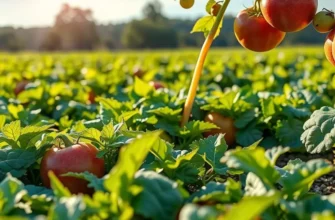Ensuring food safety is a priority in every kitchen. One of the best tools for achieving this is a food thermometer. This article will guide you on the safe use of food thermometers, how to properly store your food, and strategies to avoid waste. Knowing the right temperatures for different foods not only enhances safety but also improves your food management techniques at home. Let’s equip you with practical knowledge that can be easily applied in your culinary practices.
Understanding Food Temperatures: The Key to Safety

Successfully preventing foodborne illnesses hinges predominantly on one fundamental principle: managing food temperatures properly. This might sound simple, yet it requires awareness and the right tools to get it right every time. Let’s start by identifying some crucial temperature thresholds necessary for safe cooking and storage.
Raw meat and poultry must be cooked to precise internal temperatures to ensure all bacteria are eliminated. Chicken and turkey should reach an internal temperature of 165°F (74°C), while beef, pork, lamb, and veal should aim for a minimum of 145°F (63°C), followed by a three-minute rest period before carving or eating. Ground meats are more susceptible to bacterial presence, thus need to be cooked to 160°F (71°C).
Fish and shellfish are exceptions in the realm of cooking temperatures. Most seafood is safely cooked when reaching 145°F (63°C), except when visible flakiness or opacity indicates readiness. Make sure you understand the unique needs of fish if you’re curious about exploring speedy preparation methods. Explore more about precooking fish efficiently.
When it comes to reheating leftovers or ready-to-eat ham, temperatures must elevate to at least 165°F (74°C) before serving again, ensuring any residual bacteria have had no chance to thrive.
Storing food at the right temperature is equally crucial. Refrigerators should maintain a steady temperature of 40°F (4°C) or below, while freezers should be kept at 0°F (-18°C). Operating outside these parameters dramatically increases the risk of food spoilage or pathogen growth.
The practical envelope of food safety extends to monitoring these temperatures consistently. The most effective tool for this is a reliable food thermometer. Whether cooking on a grill, stovetop, oven, or storing in a fridge, accurate temperature checks with a thermometer are indispensable. Insert the thermometer into the thickest part of the food, avoiding bones or fat, which can give false readings. Many digital thermometers provide quick, easy readings, while analog options require a short wait to ensure accuracy.
Routine checks of refrigerator and freezer temperatures are equally important. Using an appliance thermometer can help verify that your cooling devices maintain the correct temperatures.
Remember, the journey to mastering food safety isn’t only about preventing illness; it also significantly reduces waste. By maintaining correct temperatures, you extend the shelf life of your foods, thereby reducing spoilage and saving money. For insights on minimizing waste during meal prep, consider these effective strategies.
Accurate temperature management underpins every bite of safe, delicious food you prepare. While it may require extra vigilance, the payoff—a healthy home and less food waste—is worth every effort.
Best Practices for Using and Storing Food Thermometers

Using a food thermometer properly is crucial for food safety and ensuring your culinary creations are both safe and delicious. But beyond knowing when to use it, understanding how to clean, calibrate, and store your device will extend its life and enhance its accuracy.
Cleaning Your Food Thermometer
After each use, meticulously clean your food thermometer to prevent cross-contamination. Start by washing the probe in hot, soapy water, avoiding submerging the entire device. For thorough hygiene, especially after contact with raw poultry or meat, consider a quick dip in boiling water or a food-safe sanitizing solution. Pay attention to any crevices where food particles might lodge and dry your thermometer with a clean towel.
Calibrating for Precision
For consistent accuracy, regularly calibrate your food thermometer. Most thermometers come with detailed instructions for calibration; however, a standard method is the ice water test. Fill a glass with ice and water, then stir. Immerse the probe without touching the glass sides, and ensure it reads 32°F (0°C). If there’s a discrepancy, adjust according to the manufacturer’s instructions. Incorporating regular calibration adds to the reliability of your temperature readings.
Proper Storage Techniques
Storing your food thermometer correctly is as important as using it. Avoid placing it in a cluttered drawer where it might get bumped or scratched. Consider using a protective case or sheath, often included with the thermometer, for safe storage. Keep it in a cool, dry place to prevent any internal damage caused by moisture or extreme temperatures.
For those who are equally concerned about eco-friendly practices, refer to eco-smart kitchen storage ideas that discuss efficient storage solutions.
Efficient Usage Tips
When using your food thermometer, take multiple readings to ensure accuracy, especially when cooking large cuts of meat. Insert the probe into the thickest part, avoiding bone or fat, which can skew results. For uniformity, stir liquids before taking the temperature to avoid surface-only readings.
Incorporate a routine check of your thermometer before each use. Whether digital or analog, batteries or connections can deteriorate, affecting performance. Replace batteries as needed and ensure the probe connection is firm if applicable.
Mastering the art of using a food thermometer involves thoughtful engagement beyond the kitchen. A well-maintained and accurately performing thermometer is not just a tool; it’s an ally in reducing food waste and ensuring every meal meets safety standards. Understanding and applying these best practices will lead to confidence in both your food preparation and storage techniques.
Final words
Using food thermometers effectively safeguards your health and elevates your culinary skills. Understanding safe food temperatures and ensuring the proper upkeep of your thermometers are vital for preventing foodborne illnesses. Practicing these methods not only enhances your food safety but also significantly reduces waste at home. Embrace these simple tips and habits to transform your kitchen into a safe and efficient environment that maximizes the freshness and longevity of your ingredients. Remember, a little knowledge goes a long way in creating delicious and safe meals.







